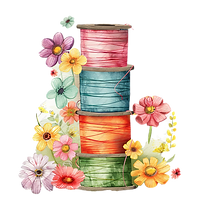The Art of Crafting Treasured Memory Blankets
- catlou

- Sep 22
- 3 min read
Updated: Oct 1

Creating a memory blanket is a beautiful way to preserve cherished moments and transform them into a cozy, tangible keepsake. These blankets are more than just fabric sewn together - they tell stories, evoke emotions, and keep loved ones close. Whether made from old clothing, special fabrics, or personalized prints, memory blankets offer a unique blend of comfort and nostalgia. This guide will walk you through the art of crafting these treasured items, offering practical tips and inspiration to help you create your own heirloom.
Understanding the Charm of Memory Blankets
Memory blankets are special because they carry sentimental value beyond their physical warmth. They often incorporate pieces of clothing, such as baby clothes, concert t-shirts, or uniforms, that hold personal significance. This transforms the blanket into a patchwork of memories, each square telling a different story.
Why choose memory blankets?
They preserve memories in a functional form.
They make heartfelt gifts for family and friends.
They provide comfort during difficult times.
They serve as a creative outlet for those who enjoy sewing and crafting.
When selecting materials, consider the stories behind each fabric piece. Soft cotton from a baby’s first outfit, a cozy flannel from a loved one’s shirt, or a vibrant fabric from a memorable trip can all add layers of meaning.
How to Design and Assemble Your Memory Blankets
Designing a memory blanket requires thoughtful planning to balance aesthetics and sentiment. Here are some steps to guide you through the process:
1. Gather Your Materials
Collect clothing or fabric pieces with sentimental value.
Choose a backing fabric that complements the patchwork.
Select batting for warmth and thickness.
Have sewing tools ready: scissors, needles, thread, pins, and a sewing machine if available.
2. Plan Your Layout
Decide on the size of each square or patch.
Arrange the pieces on a flat surface to visualize the final design.
Mix colors and textures for visual interest.
Consider adding embroidery or appliqué for personalization.
3. Prepare the Fabric Pieces
Cut fabric into uniform squares or shapes.
Stabilize delicate fabrics with interfacing if needed.
Iron pieces to remove wrinkles.
4. Sew the Pieces Together
Sew patches row by row, then join rows.
Attach batting and backing fabric.
Quilt the layers together by hand or machine.
Finish edges with binding or a simple hem.
5. Add Personal Touches
Embroider names, dates, or quotes.
Attach labels with stories behind the fabrics.
Use decorative stitches for added charm.
By following these steps, you can create a memory blanket that is both beautiful and meaningful.
How much does it cost to make a memory quilt?
The cost of making a memory quilt can vary widely depending on materials, size, and complexity. Here’s a breakdown of typical expenses:
Fabric and materials: If you use old clothing or fabrics you already own, this cost can be minimal. However, purchasing new backing fabric, batting, and thread may range from $20 to $100.
Tools: Basic sewing tools are often already owned, but if you need a sewing machine, prices start around $100 for entry-level models.
Professional services: If you prefer to have your quilt professionally made, prices can range from $150 to $500 or more depending on size and detail.
Additional embellishments: Embroidery, appliqué, or custom labels may add $20 to $50.
To save money, consider doing the sewing yourself or enlisting help from a crafty friend. Using recycled materials also keeps costs down while adding sentimental value.
Tips for Caring and Preserving Your Memory Blanket
Once your memory blanket is complete, proper care will ensure it lasts for generations. Here are some practical recommendations:
Gentle washing: Use cold water and mild detergent. Hand wash or use a delicate cycle.
Air dry: Avoid high heat from dryers which can damage fabrics and shrink the blanket.
Storage: Store in a breathable cotton bag or pillowcase to prevent dust and moisture buildup.
Avoid direct sunlight: Prolonged exposure can fade colors.
Repair promptly: Fix any loose threads or tears to prevent further damage.
By following these care tips, your memory blanket will remain a treasured family heirloom.
Where to Find Inspiration and Resources
If you’re new to crafting memory blankets or want to explore professional options, there are many resources available:
Online tutorials and videos: Platforms like YouTube offer step-by-step guides.
Crafting communities: Join forums or social media groups focused on quilting and memory crafts.
Professional services: For those who want a custom-made piece, consider companies specializing in memory quilts.
Local fabric stores: Many offer classes or workshops on quilting techniques.
Exploring these resources can help you gain confidence and find creative ideas for your project.
Crafting a memory blanket is a rewarding journey that combines creativity, skill, and heartfelt storytelling. Whether you make one for yourself or as a gift, these blankets become cherished treasures that keep memories alive and close. Start gathering your fabrics and let your story unfold stitch by stitch.












Comments